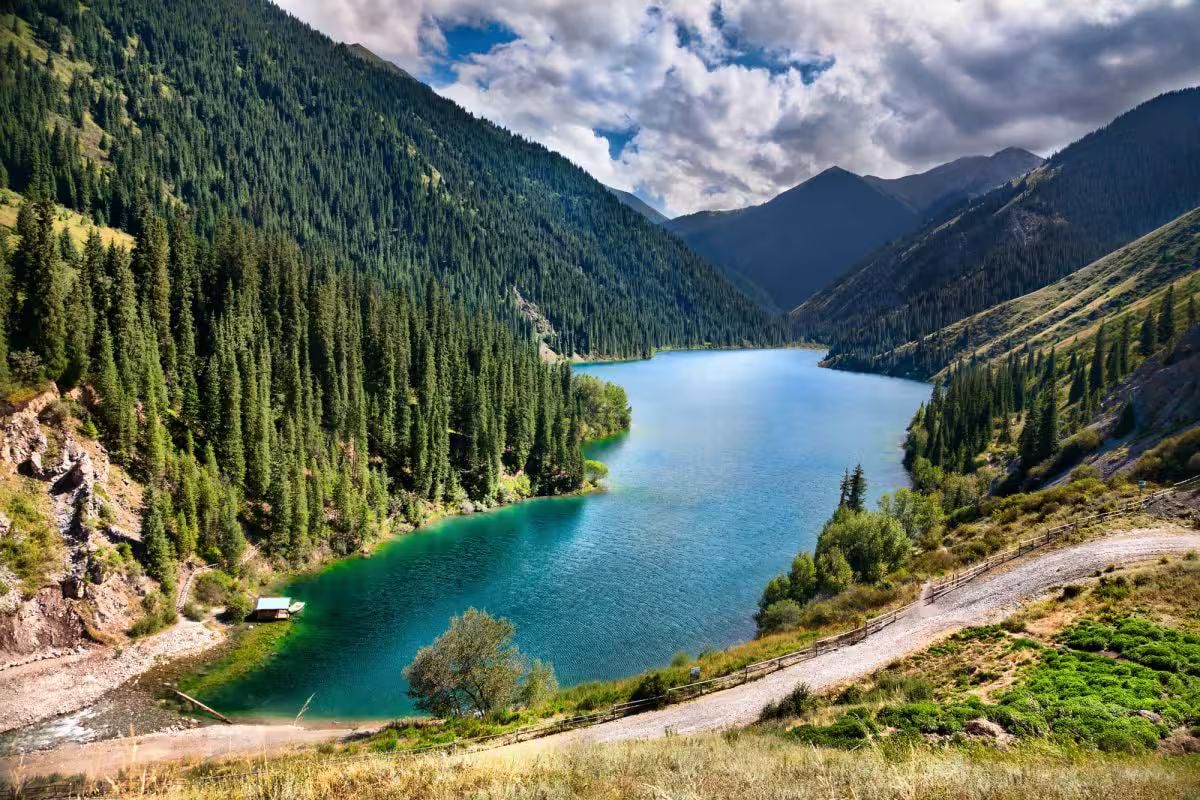The rapid expansion of hydropower development in Kazakhstan, Kyrgyzstan, and Uzbekistan poses a significant threat to the UNESCO World Heritage site, Western Tien-Shan. This is according to a report by the Rivers without Boundaries coalition.
Based on a detailed analysis of meticulously collected data on the current state of this unique natural complex, the international environmental coalition, Rivers without Boundaries, has petitioned the UNESCO World Heritage Committee to include Western Tien-Shan on the List of World Heritage in Danger.
Recognized in 2016 for its exceptional biodiversity and unique ecosystems, the Western Tien-Shan World Heritage site encompasses key protected areas across three Central Asian countries. However, the current surge in hydropower projects jeopardizes the very values that secured its prestigious international status.
The coalition’s report highlights that at least five dams have been recently constructed, with an additional 15 to 40 new hydropower dams at various stages of development—from planning to active construction—on rivers critical to the ecological integrity of the Western Tien-Shan and its surrounding areas.
The Chatkal, Pskem, Ugam, Koxsu, Aksu, Arys, Sayram-Su, and other vital waterways of the region are under unprecedented pressure, representing a dramatic escalation of threats compared to just five years ago.
In Kyrgyzstan, plans are underway to construct the Chatkal Hydroelectric Power Plant within the heart of Western Tien-Shan—the Besharal Reserve—while placer gold mining simultaneously degrades the Chatkal River valley within the reserve. In Kazakhstan, within the boundaries of the Sayram-Ugam National Park, also part of the UNESCO Western Tien-Shan site, a cascade of hydroelectric power plants and a water pipeline on the Ugam River are proposed. Numerous small hydroelectric power plants are planned on rivers flowing from the Western Tien-Shan into the Arys River basin. In Uzbekistan, construction of the Nizhne-Chatkal HPP is underway directly downstream from the Besharal Reserve in Kyrgyzstan, creating risks for upstream components of the Western Tien-Shan and potentially leading to the flooding of parts of the Kyrgyz territory within the UNESCO heritage site.
The large-scale hydropower cascade under construction on the Pskem River threatens landscape connectivity within the Ugam-Chatkal National Park, surrounding components of the Western Tien-Shan, while the recently completed Ugam cascade of hydroelectric power plants in Uzbekistan already isolates important habitats in the Kazakhstani part of the World Heritage site.
“We are witnessing a disturbing trend where short-term economic interests in hydropower are prioritized over the long-term preservation of unique natural heritage of global significance,” notes Evgeny Simonov, International Coordinator of the Rivers without Boundaries coalition. “The scale of planned construction on the rivers feeding this site demands immediate intervention from the UNESCO World Heritage Committee and the international community.”
Environmentalists point out that dam construction in the Western Tien-Shan leads to the fragmentation of crucial riverine and terrestrial habitats, isolating animal populations and disrupting landscape connectivity.
Unique and endangered species, such as the endemic Chatkal sculpin (Cottus jaxartensis), the naked sculpin (Cottus nudus), other endemic fish species, and even the snow leopard (Panthera uncia), are affected. The degradation of unique river valley ecosystems, including riparian forests and the habitats of wild fruit tree ancestors, is underway.
“Plans to build hydroelectric power plants within the Besharal Reserve or Sayram-Ugam National Park are a direct encroachment on the integrity of the World Heritage site,” emphasizes Alexander Kolotov, Regional Director of the Rivers without Boundaries coalition. “Underestimation of the impact on aquatic ecosystems, especially the unique ichthyofauna, and the ignoring of the cumulative effect of hydropower cascades is a path to the loss of biodiversity that cannot be restored. It is necessary to immediately halt all dangerous projects and conduct a truly independent and comprehensive assessment of projects with the participation of all stakeholders.”
Environmentalists believe the current situation constitutes a violation of the region’s international obligations under the World Heritage Convention, the Aarhus Convention (regarding access to information and public participation), and the Espoo Convention (regarding the conduct of transboundary environmental impact assessments).
The Rivers without Boundaries coalition has appealed to the UNESCO World Heritage Committee to include the transboundary Western Tien-Shan site on the List of World Heritage in Danger at the upcoming 47th session of the World Heritage Committee in July 2025.

